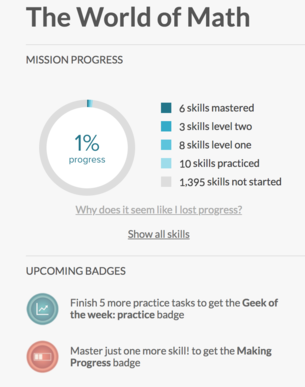What is game-based learning?
The term ‘game-based learning’ is used to describe a number of different phenomena in which games or a playful outlook are key to the learning process. There are many definitions, but not all of them employ the same categories. In simple terms, game-based learning can be summarised using the following two characteristics:
- Games are integral to the teaching process. Students learn by playing games (computer games, board games or role play).
- We adopt a playful attitude to teaching. Standard learning activities are carried out as part of a game-oriented approach, commonly termed gamification.
What do games and play have to do with teaching and learning?
Research into game-based learning is just as varied as the term itself. However, most authors in this field are agreed on three main benefits linked to the use of games or game-based learning in the teaching process.
- Students become highly engaged in their learning activities. They are active and complete many tasks.
- Students think that games make learning fun and motivational.
- Games support autonomy development by enabling students to create a variety of adaptive learning paths.
Although current research is unable to say whether games enable students to learn better or learn more, it is clear that game-based learning stimulates involvement in the learning process.
There are many ways of using games productively in teaching, and they do not have to be digital. Board games, role play and pencil and paper games can all be used to create a variety of exciting learning experiences. But there are also a multitude of digital products that are easy to use in everyday classroom settings.
How to use games and play as part of your teaching
Board games and computer games, whether they are developed with learning in focus or simply as recreational activities, can be used both for teaching and the exploration of given subjects or topics. In the game Spleiselaget Byen (Running the City) students take on the role of city mayor and are encouraged to explore ‘the links between communities, tax and the world of business.
Commercial video games such as The Walking Dead can also be used to challenge students on ethical issuesSpillpedagogikk (Games in Education), published in 2020, is a good place to start if you want to learn more about the use of computer games in teaching. The book is reviewed in this post on the blog Playful Learning; by Caroline Cruaud (eDU), and is summarised by the author Jørund Skaug in a presentation given at the 2020 Computer Games Conference.
Games can also be used to make a mundane activity more engaging. Mentimeter is an online, interactive resource that enables you to ask your students all kinds of questions. The questions can be used either to check your students’ understanding of a topic at the start of a teaching session, or as a summing-up exercise at the end of a lecture. Mentimeter engages students by giving them the opportunity to take an active part in the teaching process. You can also create quizzes in Mentimeter that encourage students to take part in competitions involving pseudonyms and music, with a scoring system using the Leaderboard feature. This is a small initiative that makes it easy to introduce play to everyday teaching.
Another example is the use of ‘playful’ objects instead of the standard, mundane ones. Why not write suggestions on balloons rather than the usual post-it notes? It will change the entire atmosphere of the classroom.
Games and some game components can also be used to assess your students. In an assessment system based on gaming principles, students are awarded points for activities they complete, rather than losing points for the mistakes they make. All students start with zero points and can add to their points score as the game progresses. Points can be awarded for things such as completing exercises, active participation, or for helping their fellow students. At the end of a course, or academic year, the points accumulated by a student can be converted into a grade. We refer to articles by Sheldon (2012) and Lombardi (2015).
Badges can be used either as a substitute for, or to help visualise, the points a student is awarded. 
In a game-oriented teaching approach, also known as the ‘gamified classroom’, instead of using individual games in your teaching, you turn the entire teaching process into a game. The learning activities remain the same, but the ways in which they are introduced create space for playfulness. You can achieve this by using a game-oriented assessment approach, as described in (3) above, role play, (here, we refer to the student engagement tool Classcraft) or by employing a ‘quest structure’.
A quest structure presents students with a variety of multilevel tasks defined by quests or other topics. By completing their tasks, the students can unlock new quests at new levels. An example of application of the gamified classroom is described in the research project Spilltakulær (Gamazing!) that uses gaming principles to develop student autonomy and collaboration, and to stimulate interest in the teaching of foreign languages.
The USN learning platform Canvas also makes it easy to create learning paths. Students can progressively unlock new modules on their learning path by meeting a given requirement, such as answering quiz questions, submitting an exercise or completing a preceding module. Read more about how learning design is applied in Canvas, and how to use the requirements set out in the modules.
Spillnettverk: a USN network for games and play
Did you know that USN has its own Game network (Spillnettverk)? This is an open and voluntary network of USN staff and students who either research games and/or play, use games and/or play in teaching, or are curious about it. In-person and digital gatherings are organised every semester and the Teams channel is always open for new threads and discussions. Visit the network's Teams by clicking this link.
Resources

